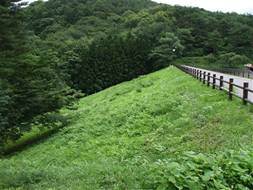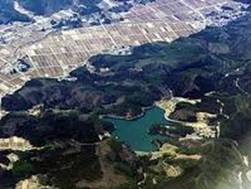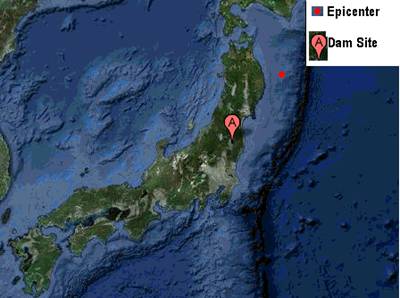As of March 20, 414 dams in Japan were inspected. 11 embankment dams had shallow cracking on the crest; but they are not serious. 2 asphalt concrete rockfill dams had small cracking on the face; but they sustain water with no problems. A small slope failure occurred on the reservoir at a concrete gravity dam. Other dams function well.
The Fujinuma Dam, also known as the Fujinu Dam, was an embankment dam on a tributary of the Abukuma River 16 km west of the city office of Sukagawa City in Fukushima Prefecture, Japan. The dam's primary purpose was irrigation and it was completed in 1949. The dam failed on 12 March 2011 after the 2011 Tohoku earthquake. It is reported that 9 downstream people were killed.
The dam was a 18.5m high and 133 m long embankment-type with a structural volume of 99,000 m3. The dam sat at the head of a 8.8 km2 drainage area and its reservoir had a capacity of 1,504,000 m3, of which the same amount was active or "useful" capacity. The reservoir had a surface area of 20 ha. The dam was built by Shoji Construction and operated by Coastal Reclamation Hanakawa Kou District.


Fig.1 Fujinuma Dam before Failure

Fig.2 Distance between Fujinuma Dam and epicenter
(Based on the information provided by JCOLD on March 22, 2011)







